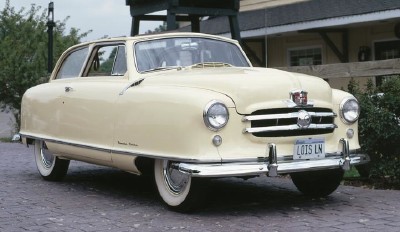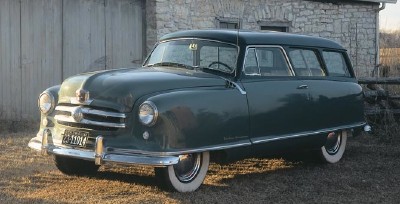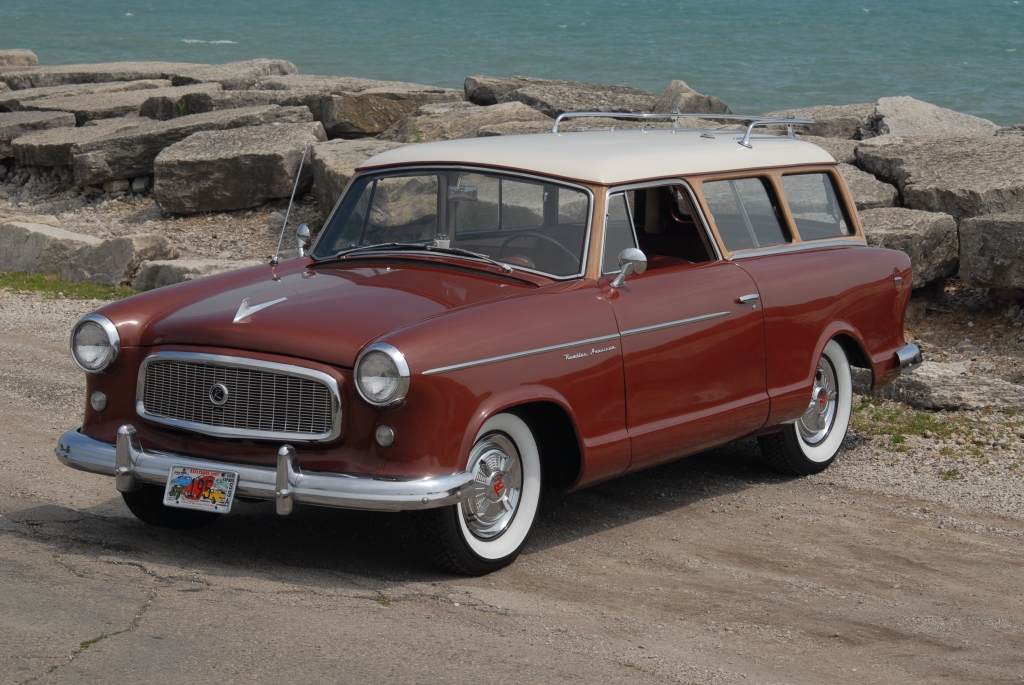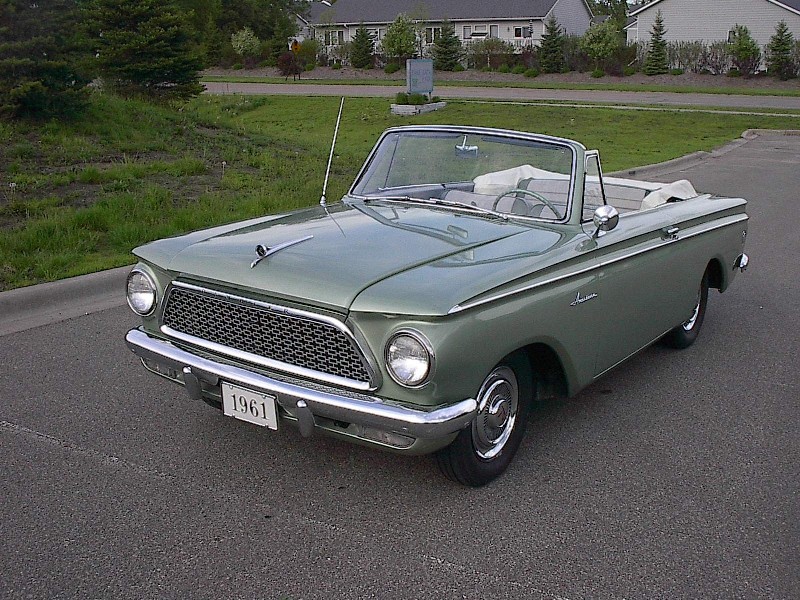|
1950 - 1963 Rambler American
  1951
Nash Rambler and Nash Rambler Wagon
With time, establishing quite an elite status, the Rambler nameplate is responsible for leading the North American auto industry into smaller, more economical vehicles, which eventually received the identity of ‘compacts'. Various companies attempted to build smaller vehicles following the war, with little success. The Nash Kelvinator Corp. of Kenosha, Wisconsin was the one to introduce the first ever successful compact, the stylish 1950 Rambler. Introduced at first as a convertible only, the Rambler was an instantaneous hit and the line quickly expanded to include sedans and station wagons. Basically remaining the same, the Rambler only received mild restyling in 1953. Nash and Hudson merged in 1954 to form American Motors Corporation. As vehicles were getting larger and larger, the compact 100 in. wheelbase Rambler was limited. In 1955 the Rambler was discontinued while the company focused on the larger 108 inch wheelbase Rambler. President George Romney took a chance in 1958 and decided to resurrect the smaller Rambler, based on the success of the larger Rambler. He discontinued the large Hudsons and Nashes and chose to concentrate on the smaller models instead. Disgusted and appalled by the size of American cars; which he called ‘gas guzzling dinosaurs', Romney is responsible for coining the word ‘compact'.  Douglas
Englin's 1960 Rambler American Custom
Wagon - 1 of 1430 produced
In 1958 the all new Rambler was reborn, the Rambler American. Sporting a flashy new mesh grille, and the wheel arches opened up. As the North American economy was fighting a recession, the new Rambler couldn't arrived at a more ideal time as consumers were searching for something smaller and more economical. The Rambler was known as a fuel miser and had won the Mobile Economy Run various times. The Rambler American found a very willing market. Even though the design of the compact vehicle was old fashioned, 30,640 units of the 1958 model were sold. At a top speed of 86.5 mph, Road & Track magazine reported that the 90-horsepower six-cylinder engine could achieve zero to 60 mph in merely 16 seconds. Faster by 5 seconds than the Studebaker Lark, the 1959 American was a carryover of the 1958. In 1959 AMC added a station wagon that only increased its popularity and the 91,491 units were sold. Very similar to the 1958 and 1959 Rambler, the 1960 American featured minimal trim changes and the addition of a four door sedan. 1960 was also the year in which the Big Three, Ford, GM and Chrysler finally responded to the import-car challenge. The Chevy Corvair, the Ford Falcon and the Chrysler Valiant were released, but despite this new competition, AMC managed to sell 120,600 of its Rambler American.  Jim
Kinville's former 1961 Rambler
American
convertible
Gaining popularity in the 1961 model
year, the Rambler American lost all of its
visual connection with the original 1950 Rambler with the addition of
all-new styling, this time square rather than round, though the 100
inch wheelbase was retained. For 61 the American was available in
2 door post, 2 door hard top, wagon, and new for 61, a convertible. The
Rambler American would remain virtually unchanged through the end of
the 63 model year.With unit construction bodies that were susceptible to rust, those early Ramblers are very rare now. Though remembered, as the Rambler proved to be reliable, economical and sturdy. The Rambler also performed the very rare feat of having two distinct and successful model runs. A feat that is mostly unheard of in the automobile industry. |